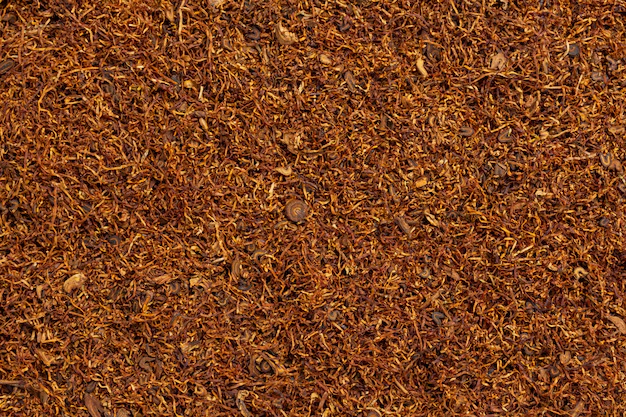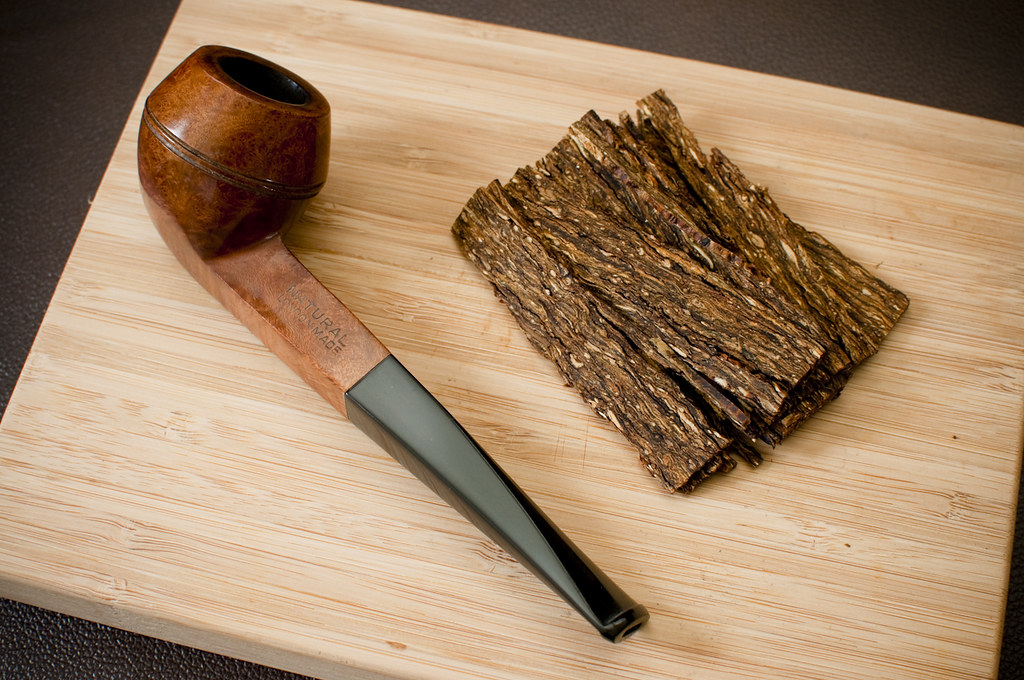Table of Contents
Natural tobacco is often perceived as a cleaner, less harmful alternative to processed tobacco due to its lack of chemical additives.
However, a key question arises: Does natural tobacco still contain nicotine, the primary compound associated with tobacco’s addictive properties? The answer lies in understanding the natural composition of the tobacco plant and how nicotine is inherently present.
This article explores the presence of nicotine in natural tobacco, how it compares to processed products, and its implications for health and consumption. Whether for traditional use or modern nicotine alternatives, understanding natural tobacco is essential for making informed decisions.
What Is Natural Tobacco?

Natural tobacco refers to tobacco in its purest form, free from the chemical additives and processing often associated with commercial tobacco products like cigarettes or cigars.
It is typically grown, harvested, and cured without artificial enhancements, making it a popular choice for those seeking a more “authentic” tobacco experience.
How Natural Tobacco Differs from Processed Tobacco
Natural Tobacco:
- Grown without chemical fertilizers or pesticides.
- Contains only the naturally occurring compounds found in the plant, including nicotine.
- Used in products like hand-rolled cigarettes, pipe tobacco, and chewing tobacco.
Processed Tobacco:
- Often includes additives to enhance flavor, burn consistency, and nicotine delivery.
- Found in mass-produced cigarettes, cigars, and other commercial tobacco products.
Why Some People Prefer Natural Tobacco
- Perception of Healthier Options: Many believe that natural tobacco, without additives, is less harmful than processed products.
- Additive-Free Experience: Natural tobacco users value the absence of chemicals designed to alter flavor or increase addiction.
- Traditional Appeal: It is often associated with cultural or artisanal practices, such as hand-rolled cigars or traditional pipe smoking.
Common Uses of Natural Tobacco
- Smoking: Used in unprocessed cigarettes, cigars, and pipes.
- Chewing: Consumed as raw or cured tobacco for oral use.
- Modern Applications: Incorporated into products like nicotine patches and lozenges as a natural source of nicotine.
Natural tobacco’s simplicity and lack of additives make it appealing, but its core compound—nicotine—remains a crucial factor in its effects and risks. The next section delves into whether natural tobacco contains nicotine and how it compares to processed varieties.
Does Natural Tobacco Contain Nicotine?

Yes, natural tobacco contains nicotine. Nicotine is an inherent chemical compound in all tobacco plants, including natural and processed varieties. It is produced by the plant as a natural defense mechanism against insects and other threats. Whether the tobacco is cultivated organically or chemically processed, nicotine remains a primary component.
The Natural Role of Nicotine in Tobacco Plants
- Insect Repellent: Nicotine acts as a natural pesticide, protecting the tobacco plant from being eaten by pests.
- Produced in the Roots: Nicotine is synthesized in the roots of the plant and transported to the leaves, where it is concentrated.
Nicotine in Natural vs. Processed Tobacco
Natural Tobacco:
- Contains nicotine in its unaltered, naturally occurring levels.
- No additives are used to enhance or alter nicotine content.
Processed Tobacco:
- Manufacturers may adjust nicotine levels by adding or removing compounds during processing.
- Additives are often included to increase nicotine absorption or enhance addiction potential.
Is Nicotine Content Higher in Natural Tobacco?
Natural tobacco typically retains its original nicotine levels, which vary based on factors like the plant species and cultivation methods. Processed tobacco, on the other hand, may have artificially enhanced or reduced nicotine content to suit commercial product needs.
Nicotine Is Unavoidable in Tobacco
Whether tobacco is natural or processed, nicotine is an intrinsic component. Users seeking alternatives with controlled nicotine levels often turn to products like natural nicotine lozenges, such as Nic Nac Naturals, which offer a safer, measured way to consume nicotine without harmful additives.
In the next section, we’ll explore how much nicotine is typically present in natural tobacco and the factors influencing its concentration.
How Much Nicotine Is in Natural Tobacco?

The amount of nicotine in natural tobacco varies based on the plant species, growing conditions, and cultivation practices. On average, natural tobacco contains significant nicotine levels that contribute to its effects and potential for addiction.
Nicotine Levels in Common Tobacco Species
Nicotiana Tabacum:
- The most widely used tobacco species.
- Contains 1–3% nicotine by weight in its leaves.
- Typically used in commercial tobacco products.
Nicotiana Rustica:
- A less common species but much higher in nicotine content.
- Contains 6–9% nicotine by weight.
- Often used in traditional or ceremonial practices due to its potency.
Factors Influencing Nicotine Content
Plant Genetics:
- Different strains of tobacco plants are bred for varying nicotine levels.
Soil and Climate:
- Fertile soil and favorable growing conditions can increase nicotine production.
- Drier climates may lead to higher nicotine concentration in the leaves.
Harvesting and Curing Practices:
- Tobacco leaves harvested at different stages of growth may have varying nicotine levels.
- Natural curing methods may preserve more of the nicotine compared to industrial processes.
Comparison to Processed Tobacco
- Natural Tobacco: Retains its original nicotine concentration, making it a “pure” option for users.
- Processed Tobacco: May have manipulated nicotine levels, either increased for addiction potential or reduced for “light” tobacco products.
How Natural Tobacco Compares to Other Nicotine Sources
- Cigarettes: Often contain a blend of natural and processed tobacco, with additives designed to optimize nicotine delivery.
- Nicotine Replacement Products: Such as patches or lozenges, offer lower, controlled doses of nicotine derived from natural sources.
Understanding the nicotine content in natural tobacco highlights its potency and potential risks. In the next section, we’ll discuss how nicotine from natural tobacco affects the body and mind.
Effects of Nicotine in Natural Tobacco

Nicotine, whether derived from natural or processed tobacco, significantly impacts the body and mind.
As a stimulant, it interacts with the central nervous system and plays a role in both cognitive enhancement and addiction.
1. Cognitive and Psychological Effects
Nicotine stimulates specific neurotransmitters, leading to:
- Improved Focus and Memory: Nicotine activates acetylcholine receptors, enhancing attention, learning, and memory retention.
- Increased Dopamine Release: Triggers the brain’s reward system, creating feelings of pleasure and motivation.
- Temporary Mood Elevation: Nicotine can alleviate stress and anxiety in the short term, contributing to its appeal.
2. Physical Effects on the Body
Nicotine affects multiple bodily systems, including:
- Heart and Circulatory System:
- Increases heart rate and blood pressure.
- Prolonged use may strain the cardiovascular system.
- Metabolism:
- Slightly boosts metabolic rate, often leading to appetite suppression.
3. Addictive Properties
Nicotine is inherently addictive, regardless of its source.
Why It’s Addictive:
- Rapid absorption into the bloodstream triggers dopamine release, reinforcing habitual use.
Risk with Natural Tobacco:
- Despite the absence of additives, the nicotine content in natural tobacco still carries a high potential for dependency.
4. Short-Term vs. Long-Term Effects
- Short-Term: Enhanced alertness, focus, and temporary relaxation.
- Long-Term: Risk of dependency, tolerance, and negative health outcomes related to prolonged nicotine exposure.
Understanding the effects of nicotine highlights its dual nature as both a cognitive enhancer and a source of dependency. Whether consumed in natural or processed forms, its impact remains significant. Next, we’ll compare the differences between natural and processed tobacco to examine their relative risks and benefits.
Natural Tobacco vs. Processed Tobacco

While both natural and processed tobacco contain nicotine, they differ significantly in composition, usage, and health implications. These differences are critical when evaluating their risks and benefits.
1. Composition and Additives
Natural Tobacco:
- Contains no added chemicals or flavoring agents.
- Nicotine levels remain unaltered, offering a pure form of the compound.
- Typically perceived as a “cleaner” option by users.
Processed Tobacco:
- Includes additives such as sugars, flavor enhancers, and chemicals to increase nicotine absorption.
- Manufacturers often manipulate nicotine levels to maximize addictive potential.
2. Nicotine Delivery
Natural Tobacco:
- Provides a more gradual nicotine release due to its unaltered composition.
- May appeal to users seeking a more traditional tobacco experience.
Processed Tobacco:
- Additives enhance nicotine delivery speed, making it more addictive.
- Creates a stronger “hit,” which reinforces habitual use.
3. Health Implications
Natural Tobacco:
- Lacks the harmful additives of processed products but still carries the health risks associated with nicotine, such as cardiovascular strain and addiction.
Processed Tobacco:
- Additives introduce additional health risks, including exposure to harmful chemicals and carcinogens.
- Combustion in cigarettes produces tar and carbon monoxide, further increasing health hazards.
4. Perceived Benefits of Natural Tobacco
Additive-Free Appeal:
- Users believe it is less harmful due to the absence of artificial additives.
Cultural and Traditional Use:
- Often associated with ceremonial practices or artisanal craftsmanship, such as hand-rolled cigars or pipes.
5. Cost and Availability
Natural Tobacco:
- Often more expensive due to limited processing and smaller-scale production.
Processed Tobacco:
- Widely available and mass-produced, making it more accessible but less personalized.
6. Environmental Considerations
Natural Tobacco:
- Grown with fewer chemical interventions, potentially reducing environmental impact.
Processed Tobacco:
- Involves extensive industrial processes that contribute to pollution and resource consumption.
Summary of Key Differences
Natural tobacco provides a simpler, additive-free experience, but its nicotine content still poses health risks. Processed tobacco, on the other hand, intensifies these risks with added chemicals and enhanced nicotine delivery. In the next section, we’ll explore how natural tobacco is being used in modern products as a source of controlled nicotine.
Uses of Natural Tobacco in Modern Products

Natural tobacco has become an essential source of nicotine for various modern applications, particularly in products designed to offer a safer and more controlled nicotine experience. These innovations highlight the growing demand for alternatives to traditional tobacco consumption.
1. Nicotine Replacement Therapy (NRT) Products
Natural tobacco serves as a primary source of nicotine for NRT products, which are designed to help individuals quit smoking or manage nicotine cravings.
Examples of NRT Products:
- Nicotine Lozenges: Dissolvable tablets offering controlled nicotine release.
- Nicotine Gum: Provides a chewable option for managing cravings.
- Nicotine Patches: Delivers nicotine transdermally for long-lasting relief.
Benefits of NRT Products:
- Free from harmful additives found in traditional tobacco.
- Provide measured doses of nicotine, reducing the risk of overuse.
2. Clean Nicotine Alternatives
Brands like Nic Nac Naturals use natural tobacco as a source of pure nicotine, offering products that align with health-conscious lifestyles.
Key Features:
- Derived from natural sources without synthetic additives.
- Provides a safer alternative to smoking or vaping.
Appeal: Ideal for users seeking nicotine’s cognitive benefits without the health risks associated with traditional tobacco products.
3. Non-Combustible Tobacco Products
Natural tobacco is increasingly being used in non-combustible forms, such as:
- Snus: A moist, smokeless tobacco product placed under the lip.
- Dissolvable Strips or Tablets: Small, portable products that dissolve in the mouth.
4. Research and Medical Applications
Natural tobacco is also utilized in scientific research and the development of new therapeutic products:
- Pharmaceutical Development: Research into nicotine’s potential benefits for cognitive enhancement or neurodegenerative conditions.
- Agricultural Studies: Exploring nicotine’s role as a natural pesticide and its applications in sustainable farming.
5. Modern Innovations
As consumer preferences shift toward cleaner, more sustainable products, the use of natural tobacco in nicotine delivery systems continues to evolve:
- Eco-Friendly Packaging: Many natural tobacco-based products now emphasize sustainable materials.
- Organic Certification: Some brands offer organic nicotine options for users prioritizing natural farming methods.
Natural tobacco’s versatility has made it a cornerstone of modern nicotine products. These innovations provide safer, controlled alternatives for users seeking to reduce their reliance on traditional tobacco while still benefiting from nicotine’s effects. In the final section, we’ll summarize the key takeaways about natural tobacco and its nicotine content.
Conclusion
Natural tobacco inherently contains nicotine, as it is a key compound produced by the plant for protection. While it lacks the additives and chemicals found in processed tobacco products, the nicotine in natural tobacco still poses risks related to addiction and health. Understanding its nicotine content and effects is crucial for making informed decisions about its use.
In modern times, natural tobacco has become a valuable source of nicotine for non-combustible and replacement products, such as gums, patches, and lozenges. Brands like Nic Nac Naturals offer cleaner, controlled alternatives that align with health-conscious lifestyles. Whether used traditionally or in innovative applications, natural tobacco remains a significant part of the nicotine landscape, providing both challenges and opportunities for safer consumption.

Hi, Dave Michaelson here, a longtime biohacker. I started this blog to help you focus on natural ways to improve health and performance. My work revolves around analyzing the science behind cognitive enhancers, nutrition, and longevity strategies. Natural nicotine products are one of my interests, particularly their effects on focus and energy. Everything I share is based on research and real-world application, ensuring practical, reliable insights. The information on my blog is not medical advice. Please do your own research.




